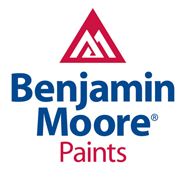Transform Your Metal Surfaces with Flawless Precision
If you’ve ever dealt with painting metal surfaces like railings, fences, or machinery, you know the challenges. Traditional methods often result in drips, uneven coverage, and significant paint waste from overspray. There’s a smarter, more efficient solution that delivers a durable, factory-like finish without ever leaving your property. It’s called electrostatic painting, a cutting-edge technique that leverages the power of physics to achieve a perfect coat every time.
For property managers, business owners, and discerning homeowners in Tinton Falls, New Jersey, understanding this service is key to making cost-effective and long-lasting upgrades to your assets. This guide will walk you through how electrostatic painting works, its key benefits, and why it’s the superior choice for your next metal coating project.
How Does Electrostatic Painting Work?
The magic of electrostatic painting lies in a simple scientific principle: opposites attract. The process uses a specialized spray gun that applies a negative electrical charge to the paint particles as they are released. The metal surface to be painted is grounded, giving it a natural positive charge.
As the negatively charged paint particles are sprayed towards the positively charged metal, they are magnetically drawn to the surface. This attraction is so strong that the paint wraps around the object, coating even hard-to-reach areas like the backside of a railing or intricate parts of machinery. The result is an incredibly uniform, smooth, and durable finish with minimal waste.
The Unmatched Advantages of Electrostatic Coating
1. Superior Efficiency and Minimal Waste
The “wrap-around” effect means that nearly all the paint leaving the nozzle adheres to the target surface. This transfer efficiency can reach up to 98%, a stark contrast to conventional spray methods which can lose over 50% of paint to overspray. This not only saves material costs but is also better for the environment.
2. A Flawless, Factory-Grade Finish
Because the charged particles repel each other as they land on the surface, they distribute themselves evenly. This prevents drips, runs, and brush marks, creating a perfectly smooth, hard shell that looks like it was applied in a factory. It’s ideal for restoring items to a like-new condition.
3. Exceptional Durability and Adhesion
The strong magnetic bond creates a powerful adhesion between the paint and the metal substrate. This makes the finish highly resistant to chipping, peeling, rust, and corrosion, extending the life of your metal assets and reducing the need for frequent repainting.
4. Fast and Convenient On-Site Service
One of the greatest benefits is that this entire process can be done on-site with minimal disruption. Items don’t need to be removed and transported. For businesses, this means less downtime, as objects like machinery, lockers, or elevator doors can often be returned to service the very next day.
Did You Know?
The electrostatic process ensures that the paint thickness is remarkably consistent, often within one-thousandth of an inch (1 mil) over the entire surface. This level of precision is virtually impossible to achieve with a brush or roller.
Common Applications for Electrostatic Painting
This versatile technique is suitable for a wide range of metal surfaces across different sectors. Whether you’re managing a large facility or upgrading your home, electrostatic painting services offer a premium solution.
Commercial & Industrial Projects
- Metal Office Furniture (Filing Cabinets, Desks, Lockers)
- Elevator Doors and Frames
- Storefronts and Window Mullions
- Wrought Iron Fences and Gates
- Industrial Machinery and Equipment
- Handrails and Staircases
- Chain-link Fencing
Residential Applications
- Outdoor Metal Patio Furniture
- Security Doors and Window Bars
- Wrought Iron and Aluminum Fencing
- Metal Railings on Porches and Decks
- Radiators and Vents
- Garage Doors
This method is especially valuable for commercial painting contractors looking to provide clients with a long-lasting, high-quality finish with minimal disruption to business operations.
Electrostatic vs. Traditional Painting: A Quick Comparison
| Feature | Electrostatic Painting | Traditional Methods (Brush/Spray) |
|---|---|---|
| Transfer Efficiency | Up to 98% | 30% – 70% |
| Finish Quality | Perfectly smooth, no drips or marks | Prone to brush strokes, drips, and unevenness |
| Coverage | Complete “wrap-around” coverage | Difficult to coat complex shapes and back sides |
| Curing Time | Often dry to the touch in hours | Can take 24 hours or more |
| Durability | Extremely high, strong bond | Varies greatly, weaker adhesion |
Your Go-To Electrostatic Painting Experts in Tinton Falls, NJ
For businesses and residents in Tinton Falls and across New Jersey, preserving property value is paramount. Our state’s variable climate, from humid summers to icy winters, can be tough on exterior metal surfaces. Electrostatic painting services provide a robust barrier against rust and corrosion, making it an ideal investment for protecting fences, gates, and outdoor fixtures.
At Spectra Painting, we bring decades of experience to every project, from large-scale commercial painting contracts to detailed residential painting jobs. We understand the unique needs of New Jersey properties, including the special care required for historic restoration painting. Our skilled team ensures that every surface is properly prepared—often through services like sandblasting for a clean substrate—before applying a flawless electrostatic finish.
Ready for a Flawless, Long-Lasting Finish?
Don’t settle for less than the best for your property. Contact the experts at Spectra Painting today to learn how our electrostatic painting services can save you time, money, and hassle.
Frequently Asked Questions
What surfaces can be electrostatically painted?
This method is designed specifically for conductive materials. It works best on any metal surface, including steel, iron, aluminum, and other alloys that can be grounded.
Is the process messy?
No, it’s remarkably clean. Because over 95% of the paint transfers directly to the surface, there is very little airborne paint (overspray). Our technicians also carefully mask and protect all surrounding non-target areas.
How long does it take for the paint to dry?
Most specially formulated electrostatic paints are fast-drying. Surfaces are often tack-free within a few hours and fully cured within 24-48 hours, allowing for a quick return to service and minimal downtime.
Is electrostatic painting safe for occupied buildings?
Yes. The low overspray and low-VOC (Volatile Organic Compounds) paint options make it a safe choice for use in occupied commercial and residential spaces. We ensure proper ventilation and follow strict safety protocols.






